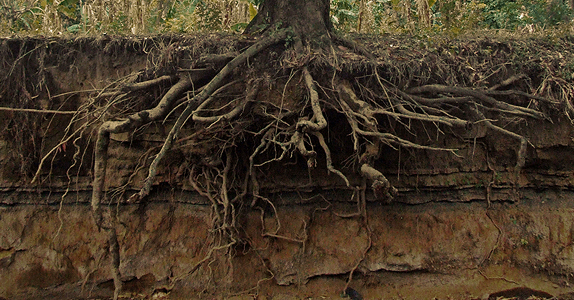
The top soil on my land in the Manzanita Mountains is thin. It is so thin that when I dig up the roots of a dead tree, they are more rock than fiber. The tentacles that feed growth are desperately wrapped around stones in their striving to find nourishment. The top soil is so shallow that when the high winds of spring whistle through the forest, roots pull from the ground and big trees, some of them a century or two old, topple to the earth.
When I moved to the East Mountains many a moon ago, it took me a few months to understand how thin the top soil was. But it’s taken all these years for me to discover how thin my own top soil is.
One Wednesday a few weeks ago, I was playing tennis. I raced to my right to retrieve a deep shot. When my shot was returned to the opposite corner, I turned quickly to reverse direction. Too quickly. Suddenly I felt a piercing pain and my leg simply gave way. I could not put any weight on it. I hobbled to a bench and quit for the day. I had torn my Achilles tendon, the longest tendon in the body.
That was more than two weeks ago, and as of this writing I am still hobbling around with uncertainty but a bit less discomfort. Maybe it will completely heal next week, or the week after. Meanwhile, I no longer play tennis. I no longer run, bike, hike or swim. I don’t even do my accustomed morning walk of 20 minutes roundtrip to get the mail. I feel as if I am living almost without legs. Shortly before my tennis injury, I read a travel essay by a man who walked a jungle trail in Papua New Guinea for 18 days. He hurt his knee badly on the first day. Thereafter, he said, “it was like walking on one leg.” I couldn’t imagine it when I read it; now I can.
The same week I tore my leg, my computer died. I use the computer to write my regular columns for The Independent and New Mexico Mercury, to do my theater reviews for Talkin Broadway, to struggle composing novels and short stories. I also use the computer to browse news sites, an essential part of my life now that we no longer have any reliable source of print news in New Mexico. And nowadays it is through email that I keep in touch with family and friends and colleagues.
So I no longer found myself hobbling on one leg. I felt as if both legs had been cut off.
I have spent a lot of time reading and thinking. There is nothing like having a lot of time on your hands to provoke thoughtfulness.
I realized how shallow my own top soil is. Since selling The Independent and retiring from the cares and crises of weekly newspaper publishing, my life at home had come to focus around my computer and exercise. I had come to depend on the high from swimming a mile, biking for an hour, running several miles along the hilly roads that vein my neighborhood. Likewise I had taken for granted the high from turning thoughts, emotions and facts into words for an audience.
Now I had neither.
But what exactly was the writing that I missed so profoundly? It was, I came to understand, the unrealized part of my writing, the fiction, the creativity of turning the real world into an imagined one. I had let this part of life slip into the background in recent months, I had to admit to myself when I was being honest, and now I needed to recommit to it. Only by doing this, I came to believe, could I put down deep roots in shallow soil.
The shallow soils of my land and my life are also the thin soil of my community. Every year, that soil seems to become thinner as we thin our forests; watch the soil erode; witness the water table evaporate; and search with growing despair for the baby rabbits who should be scurrying in the brush this time of year and for the Albert squirrels who now scarcely clamber up the ponderosa trunks and for the prairie dogs and coyotes who are now seldom seen and for the deer who have almost entirely disappeared and for the mountain lion or two who used to prowl these woods and for the bears who regularly turned over our rocks in search of grubs and the elk I once saw in the neighborhood park after hunters had chased them from the national forest.
What is thinning our neighborhood soil more than anything else is fear, fear of the fire that we all know will come someday. That fear is what divides and unites us. It is what makes us argue about how to forestall the inevitable and it is what unites us in worry about how to prepare for it.
Fear is a motivation like no other. It keeps us on our toes, lets us know that we are alive, induces us to want what we do not have: security and safety and assurance. So this fearful thinning of our community soil forces us, like the ponderosas and pinons and junipers, like the writer struggling to imagine the right words, like the one-legged jungle hiker and the limping tennis player, to put down roots deep enough and strong enough to embrace the very rocks that threaten to strangle us.
(Photo by Aaron Escobar / CC)



Responses to “Where the Top Soil is Thin”